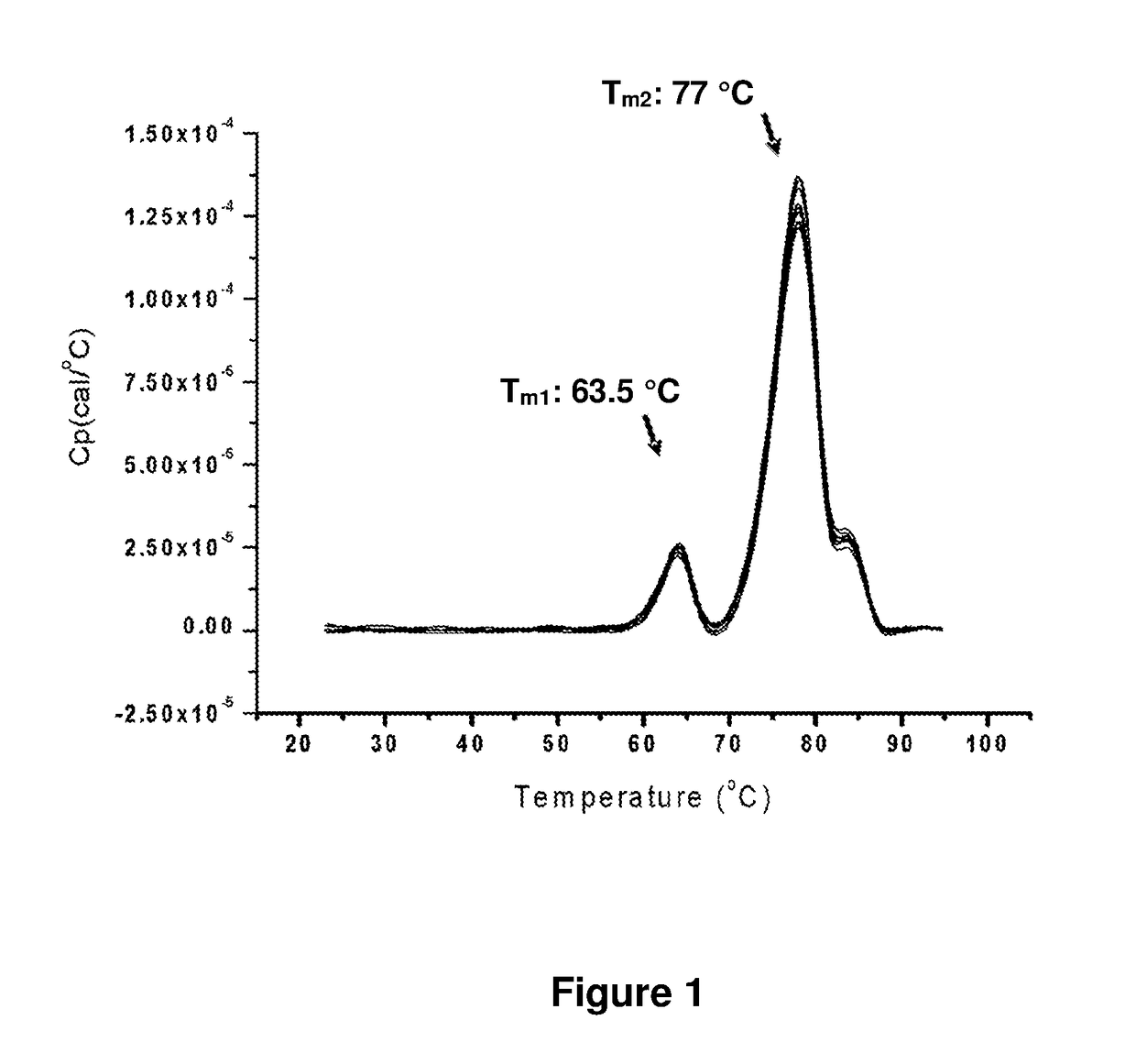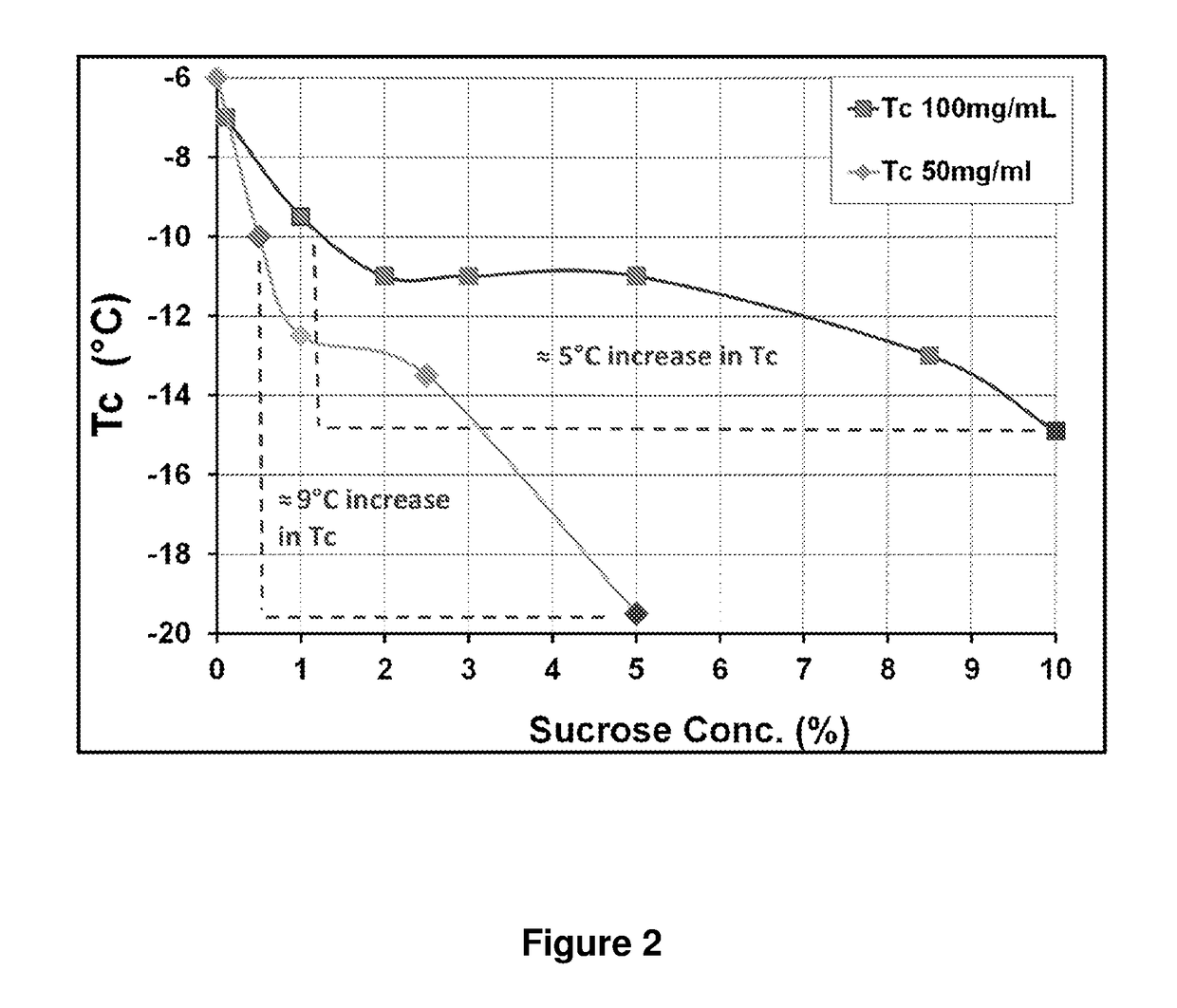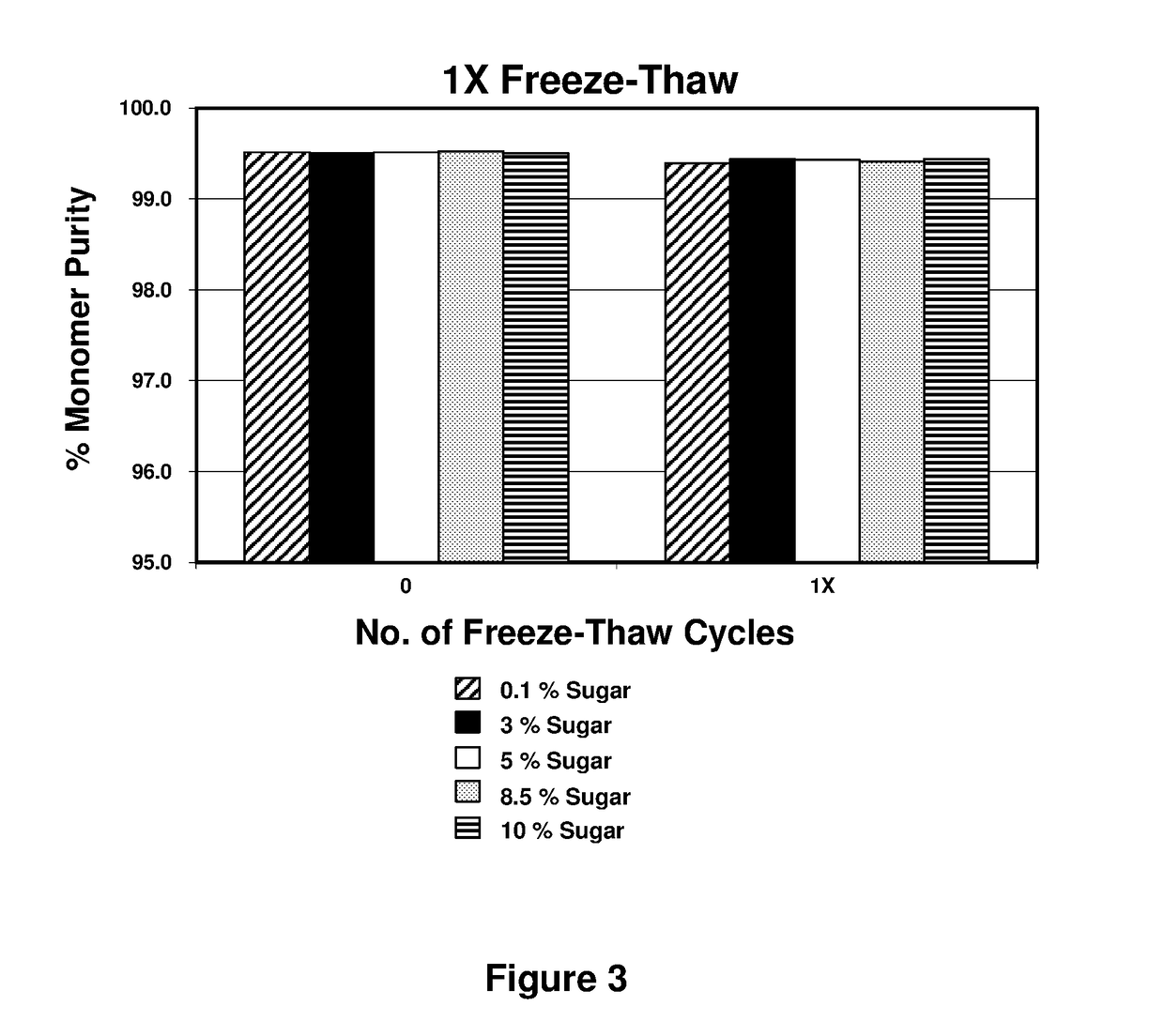Optimized ratios of amino acids and sugars as amorphous stabilizing compounds in pharmaceutical compositions containing high concentrations of protein-based therapeutic agents
- Summary
- Abstract
- Description
- Claims
- Application Information
AI Technical Summary
Benefits of technology
Problems solved by technology
Method used
Image
Examples
example 1
Materials & Methods
[0085]Stability studies were performed to evaluate the effect of sugar concentration on the stability of pharmaceutical compositions that contain high concentrations of protein biomolecules. The studies employed pharmaceutical compositions that contained, as exemplary protein biomolecules, either a Tenascin-3-Human Serum Albumin (Tn3-HSA) fusion protein (at 50 mg / mL) or a humanized IgG1 antibody (at 50 mg / mL or 100 mg / mL). For such studies, 1.1 mL of various pharmaceutical compositions (Table 3) was introduced into 3 cc vials. The vials were stoppered with 13 mm single vent lyophilization stoppers. The vials were then lyophilized using a lyophilization cycle, as described in Table 4.
TABLE 3Pharmaceutical Compositions EvaluatedFor Protein:Sugar Ratio StudyPharmaceutical CompositionPercentSucroseProteinHistidine,Concen-Biomolecule toProteinProteinExcipienttration.Sugar RatioBiomoleculeConcentrationand pH(w / v)(w / w)Humanized50 mg / mL25 mM0%1:0 IgG1Histidine / 0.5% 1:0.1A...
example 2
Thermal Characterization of the Pharmaceutical Compositions
[0093]Freeze Dry Microscopy (FDM) was used to determine the collapse temperature (Tc) of the pharmaceutical compositions described in Example 1, (Patapoff, T. W. et al. (2002) “The Importance of Freezing on Lyophilization Cycle Development,” BioPharm. 2002:16-21 and 71; Nail, S. L. et al. (2002) “Fundamentals of Freeze-Drying,” Pharm. Biotechnol. 14:281-360; Angell, C. A. (1995) “Formation of Glasses from Liquids and Biopolymers,” Science 267:1924-1935; Wolanczyk, J. P. (1989) “Differential Scanning calorimetry Analysis of Glass Transitions,” Cryo-Letters 10:73-76; Gibbs, et al. (1958) “Nature of the Glass Transition and the Glassy State,” J. Chem. Phys. 28(3):373-383). The glass transition temperature (Tg′) relates to the observation that as a liquid cools its viscosity increases, such that the liquid will exhibit solid-like mechanical properties even though it has not undergone a phase transition to solid (i.e., Tg′ is alw...
example 3
Stability Study of Pharmaceutical Compositions Containing a Protein Biomolecule
[0097]Pharmaceutical compositions containing a humanized IgG1 antibody protein biomolecule at a concentration of 100 mg / mL were prepared as described in Example 1.
[0098]The pharmaceutical compositions were subjected to uncontrolled 1× freeze-thaw in a 100 mL PETG bottle containing approximately 90 mL of the pharmaceutical compositions (FIG. 3). Freezing was performed at −80° C. and thawing was performed at room temperature.
[0099]High performance size-exclusion chromatography was used to measure aggregation. As shown in FIG. 3, the uncontrolled freeze-thaw did not affect monomer purity. Post-freeze-thaw, a visual inspection was performed in 3 cc glass vials with a 1 mL fill volume. The visual inspection of the vials for all protein-to-sugar ratio samples showed no change in visual appearance and no visible particle formation after 1× freeze-thaw stress. Pharmaceutical compositions comprising various levels...
PUM
| Property | Measurement | Unit |
|---|---|---|
| Fraction | aaaaa | aaaaa |
| Fraction | aaaaa | aaaaa |
| Fraction | aaaaa | aaaaa |
Abstract
Description
Claims
Application Information
 Login to View More
Login to View More - R&D
- Intellectual Property
- Life Sciences
- Materials
- Tech Scout
- Unparalleled Data Quality
- Higher Quality Content
- 60% Fewer Hallucinations
Browse by: Latest US Patents, China's latest patents, Technical Efficacy Thesaurus, Application Domain, Technology Topic, Popular Technical Reports.
© 2025 PatSnap. All rights reserved.Legal|Privacy policy|Modern Slavery Act Transparency Statement|Sitemap|About US| Contact US: help@patsnap.com



